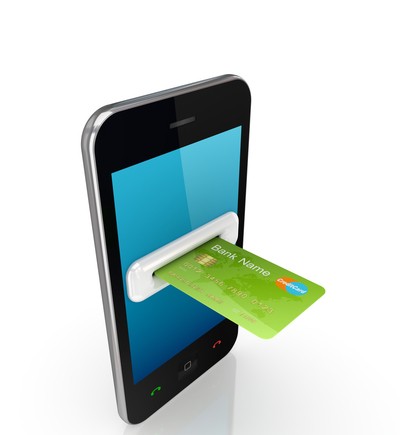The introduction of bank debit cards in the late 90’s practically led to the extinction of personal checks. No longer were grocery and retail checkout lines slowed down by shoppers writing personal checks. Shoppers could now swipe their debit cards and pay for items with money in their checking accounts. Shortly thereafter, many cash-only businesses – such as fast food restaurants – caught up with the times and began accepting plastic at the counter and window.
The convenience of credit and debit cards has led many to rely less on cash and checks. And with the growth of rewards programs, credit cards have become a favorite method of payment for some consumers.
A world without checks or cash is highly believable – especially since some consumers can’t recall the last time they wrote a check or paid for an item with cash. Yet, they may have swiped their credit or debit card multiple times before 9 a.m. – at the gas station, the bank, Starbucks, etc.
It’s safe to say that technology will most likely dictate future payment methods. Technology constantly evolves, and consumers are always on the search for ways to enhance their shopping experience.
For example, the birth of smartphone apps, such as Passbook and Key Ring, have changed the way consumers organize their store loyalty cards. With the ability to save all their loyalty cards on their phone, no more fumbling for plastic cards at the register. Simply pull up the app, choose the loyalty card and scan the barcode. And with smartphone credit card readers, practically anyone can accept credit and debit card payments with their phone. An ingenious idea for mobile businesses. But the technology doesn’t stop here.
Nowadays, your smartphone can literally become your wallet. The ability to pay at the register with a smartphone is a fairly new concept, yet many retailers have accepted this technology with open arms. In fact, Google Wallet – an Android phone app that lets consumers pay for items with their smartphones – currently has partnerships with retailers, such as Foot Locker, Radio Shack, Bloomingdales, Walgreens, Macy’s, Office Max and 7-Eleven.
How does this technology work?
Simply download the app and enter your credit card information. At checkout, tap your smartphone against the terminal, select a credit/debit card and complete your purchase. No more fumbling through your purse or wallet, or carrying tons of credit cards while shopping.
It’s only natural to question the safety of using a smartphone as a wallet. Let’s be honest, if your phone is lost or stolen, this technology can potentially give someone access to all your credit cards. But like your real credit cards, you’re protected against fraudulent charges. Report the card lost or stolen, and thieves are unable to complete a transaction. Plus, practically every smartphone has a feature that lets owners password-protect the device. That’s double protection.
Given the technology of smartphones, one could argue that credit cards will soon become obsolete. This might be a stretch given the fact that this technology requires access to a smartphone, plus mainstream participation. Only time will tell. But as more retailers accept this technology, and as consumer confidence increases, a smartphone might be the single thing that you can’t leave home without.
The introduction of bank debit cards in the late 90’s practically led to the extinction of personal checks. No longer were grocery and retail checkout lines slowed down by shoppers writing personal checks. Shoppers could now swipe their debit cards and pay for items with money in their checking accounts. Shortly thereafter, many cash-only businesses – such as fast food restaurants – caught up with the times and began accepting plastic at the counter and window.
The convenience of credit and debit cards has led many to rely less on cash and checks. And with the growth of rewards programs, credit cards have become a favorite method of payment for some consumers.
A world without checks or cash is highly believable – especially since some consumers can’t recall the last time they wrote a check or paid for an item with cash. Yet, they may have swiped their credit or debit card multiple times before 9 a.m. – at the gas station, the bank, Starbucks, etc.
It’s safe to say that technology will most likely dictate future payment methods. Technology constantly evolves, and consumers are always on the search for ways to enhance their shopping experience.
For example, the birth of smartphone apps, such as Passbook and Key Ring, have changed the way consumers organize their store loyalty cards. With the ability to save all their loyalty cards on their phone, no more fumbling for plastic cards at the register. Simply pull up the app, choose the loyalty card and scan the barcode. And with smartphone credit card readers, practically anyone can accept credit and debit card payments with their phone. An ingenious idea for mobile businesses. But the technology doesn’t stop here.
Nowadays, your smartphone can literally become your wallet. The ability to pay at the register with a smartphone is a fairly new concept, yet many retailers have accepted this technology with open arms. In fact, Google Wallet – an Android phone app that lets consumers pay for items with their smartphones – currently has partnerships with retailers, such as Foot Locker, Radio Shack, Bloomingdales, Walgreens, Macy’s, Office Max and 7-Eleven.
How does this technology work?
Simply download the app and enter your credit card information. At checkout, tap your smartphone against the terminal, select a credit/debit card and complete your purchase. No more fumbling through your purse or wallet, or carrying tons of credit cards while shopping.
It’s only natural to question the safety of using a smartphone as a wallet. Let’s be honest, if your phone is lost or stolen, this technology can potentially give someone access to all your credit cards. But like your real credit cards, you’re protected against fraudulent charges. Report the card lost or stolen, and thieves are unable to complete a transaction. Plus, practically every smartphone has a feature that lets owners password-protect the device. That’s double protection.
Given the technology of smartphones, one could argue that credit cards will soon become obsolete. This might be a stretch given the fact that this technology requires access to a smartphone, plus mainstream participation. Only time will tell. But as more retailers accept this technology, and as consumer confidence increases, a smartphone might be the single thing that you can’t leave home without.







